Media | Articles
Vellum Venom Vignette: Car design’s glue is a quarter window, too?
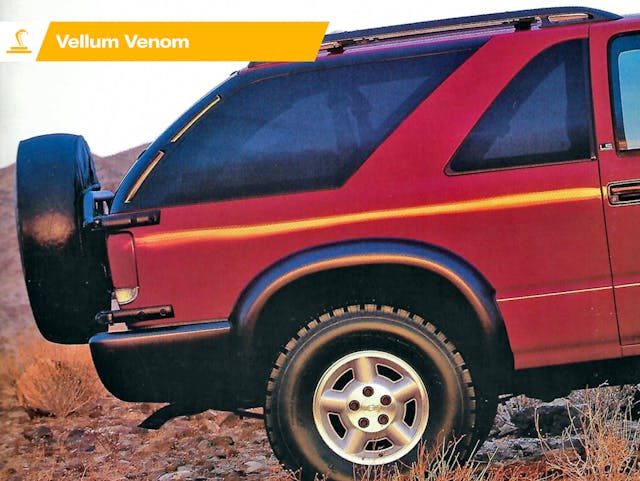
Perhaps there are no Band-Aid solutions in car design. Once you build it, you’re married to it. Even the one-year-only plastic bumpers of the 2001 Pontiac Aztek prove that once the cast is set, there’s no going back. The unprecedented re-plasticizing of the 2002 Aztek’s bumpers was impressive, but it proves some things are fully baked into a design.
Take window shapes, for example. They’re part of a vehicle’s internal structure, completely dependent on a design’s worthiness in an impact or rollover. It requires a Pandora’s box worth of rework to generate the more luxurious window treatment found on, say, a Maybach compared to its W222 S-Class template. With this in mind, the quarter window is the glue that holds a body design together—both literally (i.e. structurally and cost-effectively) and figuratively (i.e. visually and aesthetically).
Even the custom-bodied Cadillac Fleetwood 70/75 series limousines dare not differentiate by quarter-window alterations. Fisher Body made high-end lemonade with Cadillac’s gourmet lemons; but not how you’d expect, as Fisher Body chose the Coupe DeVille, not the more logical Sedan DeVille, to serve as the basis of the Fleetwood 75.
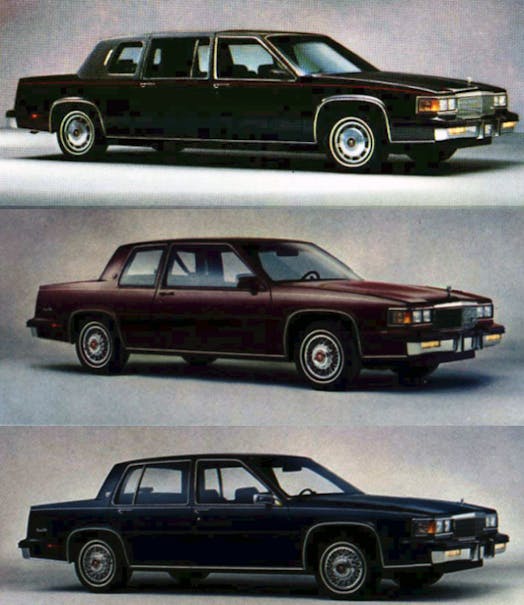
This ensured the Fleetwood 75 was baked-in with a fixed quarter window and possessed the necessary substructure to ensure appropriate safety and luxury. The safety advantages are obvious, but limo-worthy luxury demanded an isolated seating position for the occupants similar to that of a prewar, coach-built luxury sedan (plus integrated audio controls that could override driver inputs): Such a womb-like configuration would be impossible to implement on a Sedan DeVille’s puny C-pillar. With this “quarter window glue” ready to activate, Fisher Body added the Sedan DeVille’s front doors and unique rear doors.
Here’s where it gets interesting, as a similar conversion occurs when the compact SUV transitions from dedicated off-roader to tragically hip family hauler.
Marketplace
Buy and sell classics with confidence
First, let’s talk about the Ford Bronco II.
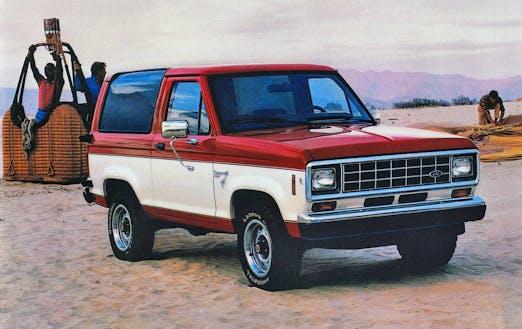
This wasn’t the first compact SUV to market, and that might be why Ford allegedly rushed it into production. The rush (among other factors) ostensibly led to safety issues with the Bronco II. Perhaps you know of a personal tragedy: What I’ve seen proves that life after a Bronco II rollover might be even worse than death. Either way, the following video (warning: graphic content) highlights the flaw in the Bronco II’s wraparound side/cargo window and modest roof pillars. The images are gruesome, and they give you a taste of the “unreasonable risk of death or injury” found in the blueprint. This partially explains why a new roof with a smaller fixed aperture and separate quarter windows was eventually needed in Ford’s SUV.
No discussion about quarter-window implementation is complete without a focus on wheelbase, especially for a vehicle type notorious for rolling over. But before we proceed, rest assured that the miniscule wheelbase was not the sole source of the Bronco II’s problems. They were compounded by a narrow track, skinny tires, and (perhaps most importantly) a tipsy ride height. While I lack the data to calculate the Bronco II’s Static Stability Factor, it’s a safe bet to assume it fared worse than GM’s Blazer/Jimmy SUV and likely scored closer to the original Bronco. Luckily Ford made the Bronco II’s successor significantly longer—and safer. (Somewhat safer, as low-pressure Firestone tires with a “C” temperature rating are not the stuff of Ralph Nader’s dreams.)
No matter, the 1991 Ford Explorer replacement had a smaller side window, a quarter window, and an extra structural pillar on its side.
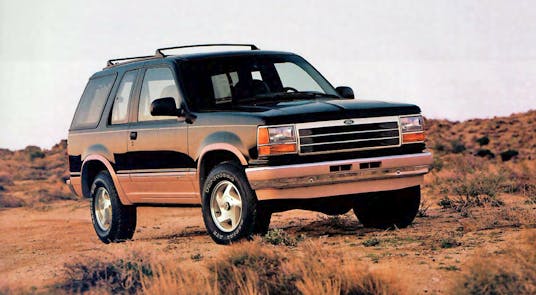
As the Ford Ranger–based SUV template matured into the 1990s, so did the family vehicles that relied on its blueprint. The new, five-door Ford Explorer was wiener dog–like in its desire to win the hearts and minds of buyers seeking an inefficient and uncomfortable alternative to a minivan, but the smaller, three-door Explorer “Sport” still had nearly eight more inches of wheelbase than the outgoing Bronco II did. Like the Fleetwood 75s of yesteryear, both Explorer body styles shared a fixed side window (and D-pillar).
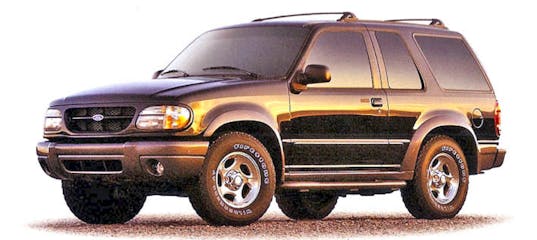
What made the three-door Sport work visually was the addition of a quarter window. It compensated for the lack of an extra door, as the Sport couldn’t get away with a windowless B-pillar like the Bronco II (i.e. no more sharing doors with the Ford Ranger) before it. The quarter window ensured that the two different body styles possessed deeper levels of interchangeability for maximum profit and a lower asking price. Only General Motors would spend the cash to make a three-door compact SUV significantly different from its larger stablemate.
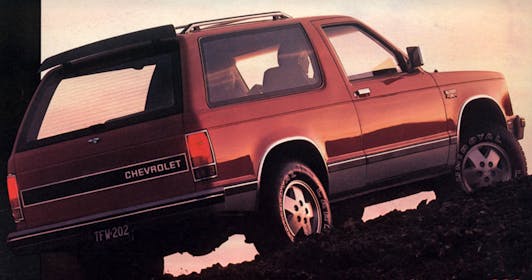
Before that, let’s discuss the 1983–1994 Chevrolet S-10 Blazer (and GMC Jimmy) three-door’s change from a single, fixed side-glass treatment to a secondary quarter window (cover photo, 1995–2005). The second generation looks like it might be longer; the cynics among us assume this was by design. Considering Ford was getting hammered by lawsuits at the time, it’d make sense that GM quietly lengthened the three-door Blazer for the SUV’s maturing market position.
But the wheelbase never changed. While I hate when the facts don’t support my theory, the original S-10 Blazer three-door SUV was already a full six inches longer than the Bronco II. General Motors clearly felt this amount of wheelbase was adequate for multiple decades of use.
Necessary aside: A five-door S-10 Blazer arrived in time to do battle with the family-sized Explorer, and both appear to share front doors with the S-10 truck. That (possible?) cost savings would explain why GM spent the extra cash to make a rear door with enough glass to blend effortlessly into the fixed side glass immediately behind it. The end result: a five-door that looks like a a three-door. While Nissan (below) did the same with the Pathfinder five-door, it avoided the expensive though visually effortless transition with glass. GM did wise up with the second generation, making a five-door SUV with exposed pillars at the rear door. More to the point, GM now reused the fixed side glass between configurations by installing a quarter window for the three-door Blazer.
Wait, no … GM didn’t reuse anything! The three-door has a unique, razor-edged, fixed side-glass panel. Even the rear roof pillars are significantly different between door configurations. So much for the quarter-window glue analogy?
Perhaps not. Most likely, the crash/roll structure is similar between the three- and five-door Blazer rooflines. The three-door’s hindquarters look sportier, but this is one time where bean-counting would have been acceptable for all parties. Perhaps GM was considering a world in which fastback three-door SUVs (possessing the spirit of a muscle car) would reign supreme off the beaten path? If so, it beat BMW and the X6 to the punch. If not, maybe Freud was right: Sometimes a vent window is just a window.
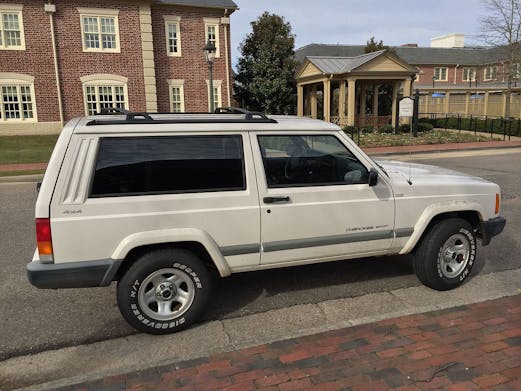
Except not, as three other major players in the three-door SUV space run the gamut of quarter-window designs. Which is somewhat surprising, as each shares a wheelbase with its five-door counterpart. The Jeep Cherokee chose the big fixed window path of the Bronco II, but the Jeep’s look is far more stable (and will absolutely be more roomy) than the Ford’s thanks to nearly seven more inches of wheelbase. The implementation of a bespoke front door (i.e. one longer than that of the five-door model) absolutely helps and is a high-water mark of design for the genre. No quarter-window glue needed here!

The very rare Toyota 4Runner three-door used a radically slanted, huge quarter window in an attempt to share the same fixed side window. It’s a cheap fix like the others but, combined with the wrap-up the roof shape of the fixed side window, this glue looks quite elegant.
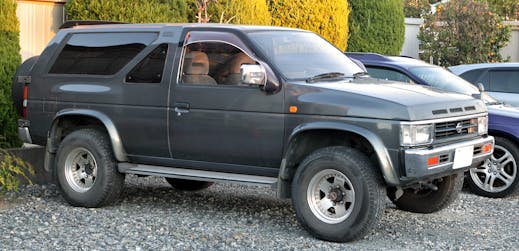
When it comes to impressive quarter-windows in the world of three-door SUVs, the offset, adorably small vent window found on the Nissan Pathfinder does something magical: It’s perfectly shaped and ideally positioned to integrate three forms that would otherwise be mismatched. Consider the photo above, and how the quarter window’s right side matches that of the door glass, making a strong (looking) B-pillar in the process. The left side matches the angle of the fixed glass, helping integrate it into the Pathfinder’s overall form. The quarter window’s lower line accentuates the fender flare over the rear wheel, and makes the belt line (i.e. the door and the quarter window’s lower lines) act like a plateau over both axles’ fender flares.
It’s beyond cool and feels like an entry-level designer was assigned the monumental task of integrating disparate design elements with a single quarter window. This is the Internet, so if it feels right, you just go right ahead and assume so. But I am still looking for a shared JDM ancestor to the Pathfinder’s fixed glass, as it feels like Nissan raided the parts bin for the Pathfinder’s big side aperture. And why wouldn’t it (theoretically) do this? All it needed was quarter window glue to make it flow.
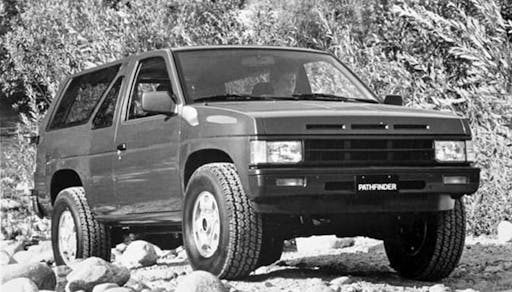
But there’s something else about the Pathfinder three-door, as the body’s insistence on angular lines (aside from delicate fender flare surfacing) makes it feel like a rolling tribute to Piet Mondrian’s 1927 Composition with Red, Yellow and Blue. While Mondrian would likely mock the angles present at each pillar (the Nissan Cube’s outline would likely be more his speed) I am sure he’d make this three-door SUV the pick of the litter. He might even agree that the quarter window is the glue that holds it all together.
From the grille, the lighting pods, the fender flares, and even the ducts in the hood, the three-door Pathfinder works perfectly in its angular perfection. Like any good piece of architecture, Nissan’s keystone is the delightfully underrated quarter window. It brought everything together, it made everything work as if by magic. Perhaps Nissan’s glass triangle is no mere glue. Maybe it’s actually super glue.

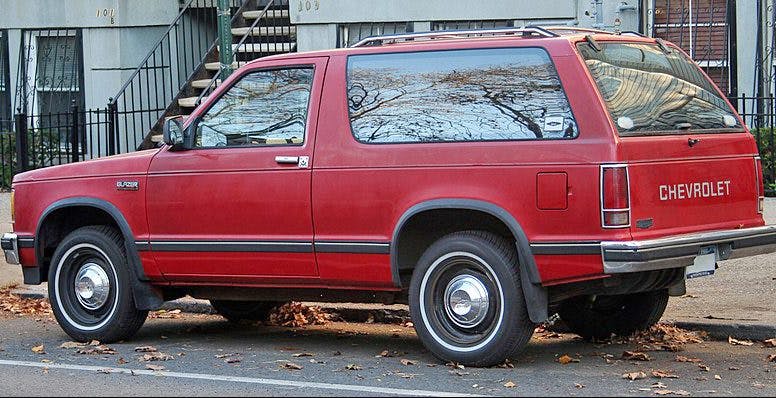

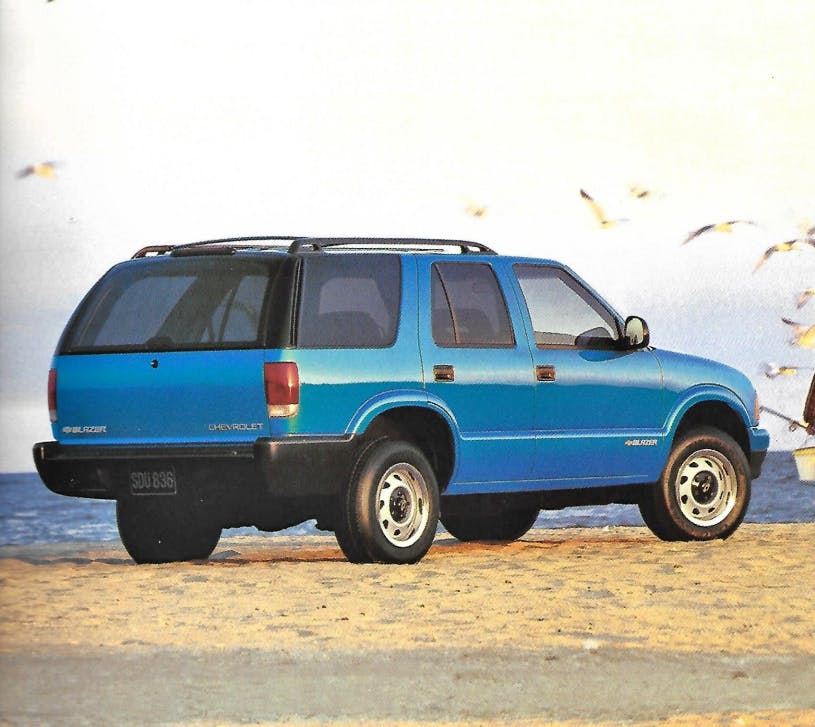
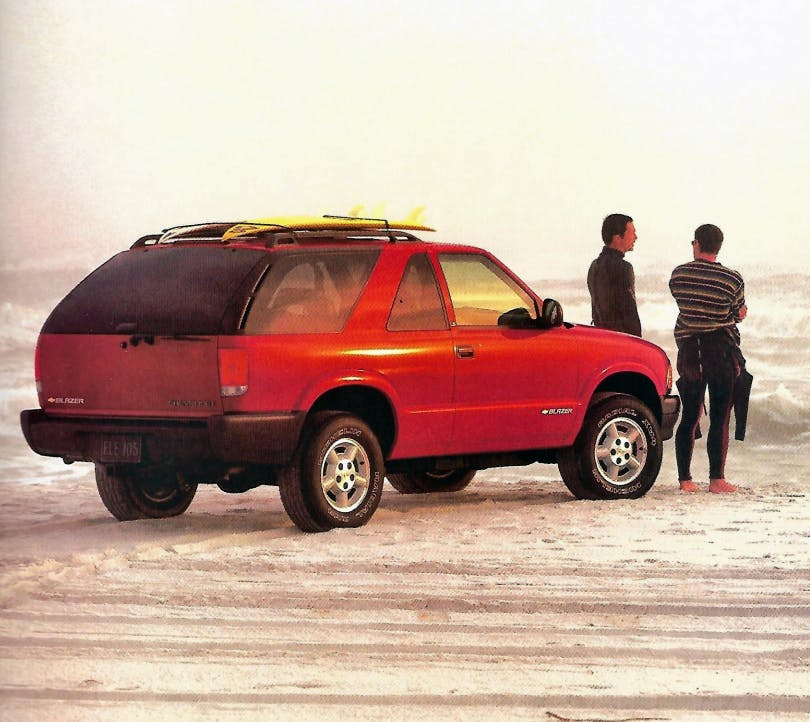

















I’ve always assumed that the Nissan Pathfinder’s triangular window is a parts-bin addition. The window looks suspiciously like the same window in a same-era Nissan Pulsar.